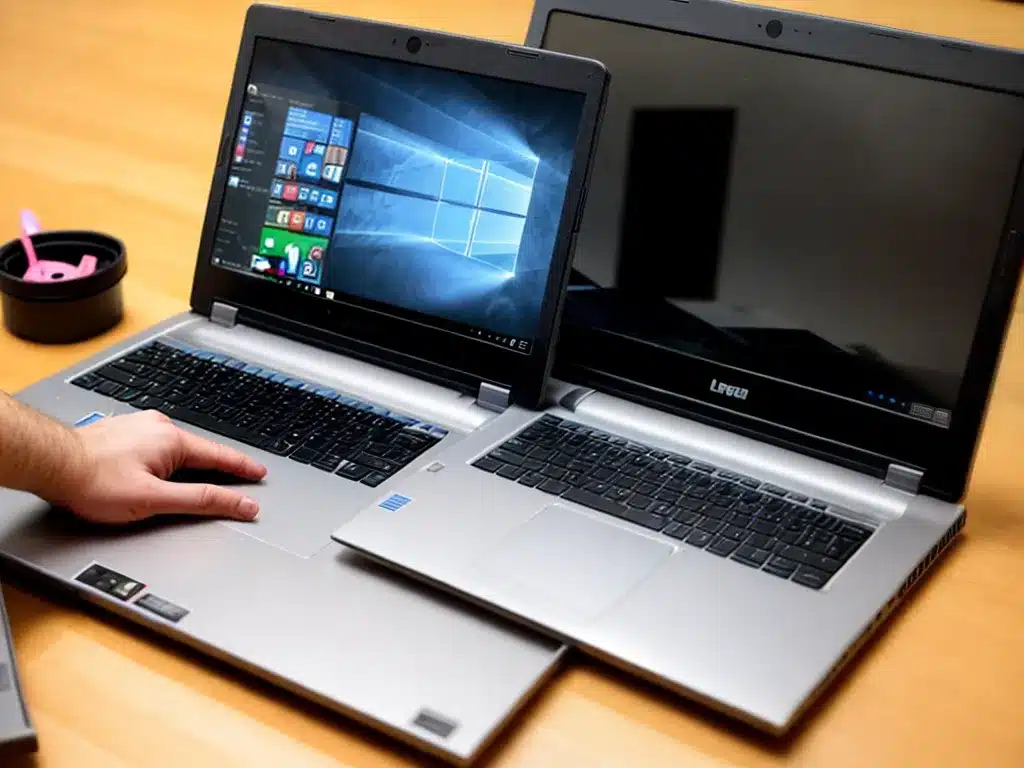
Introduction
As laptops become more integral to our daily lives, it’s important to know how to properly maintain and repair them when issues arise. Although some repairs are best left to professionals, there are a number of DIY laptop repairs that can save you time and money. This guide will outline what DIY laptop repairs are reasonable to attempt yourself and which repairs you should avoid in order to prevent further damage to your device.
Repairs You Should Attempt
Cleaning the Inside and Outside
Keeping your laptop clean, both inside and out, is one of the easiest DIY maintenance tasks.
I regularly use compressed air to spray out dust and debris that can build up in the fan vents and ports. This prevents overheating issues. I also wipe down the exterior of my laptop with a microfiber cloth to remove dirt, fingerprints, and smudges from the case and trackpad.
Replacing the RAM and Hard Drive
Upgrading the RAM (memory) or hard drive is a straightforward DIY repair on most laptop models. This can provide a noticeable boost in speed and responsiveness.
When upgrading, I make sure to purchase compatible components for my specific laptop model. I power down and unplug the laptop before removing the bottom panel or cover to access the internal components. Then I gently remove and replace the RAM or hard drive.
Replacing the Battery
Over time, lithium-ion batteries degrade and can no longer hold a full charge. Replacing an aging battery is a cost-effective fix that can restore runtime back to new.
I buy a replacement battery designed for my exact laptop make and model. Swapping out the old for the new battery typically just involves removing a few screws and connector cables. It’s one of the easiest upgrades you can do.
Reapplying Thermal Paste
Thermal paste helps transfer heat from the CPU and GPU to the cooling system. If it dries out, your laptop can overheat and throttle performance.
Cleaning off the old thermal paste and reapplying a pea-sized amount of fresh paste can improve temperatures and prevent potential damage from overheating. Just be sure to use a non-conductive paste specifically formulated for electronics.
Repairs to Avoid
Replacing the CPU or GPU
The CPU (processor) and GPU (graphics processing unit) in most modern laptops are highly integrated components that are difficult and risky for the average person to replace. They often involve completely disassembling the laptop and delicate soldering work.
Unless you have specific training and equipment, I recommend leaving CPU and GPU replacements to qualified professionals to avoid permanent motherboard damage. The cost is worth avoiding the risk.
Screen Replacements
While replacing a cracked laptop screen may seem straightforward, there are a lot of intricacies involved. Getting the correct replacement screen with compatible mounting, connectors, and signaling can be tricky.
Improperly installing a new laptop screen at home can easily damage the panel or other components. Screen replacements are best left to repair technicians that have experience replacing screens on your specific laptop model.
Motherboard Repairs
Diagnosing and repairing laptop motherboard issues like failed capacitors or connectors requires advanced skills and tools. Motherboards contain delicate circuits and components that are very easy to damage if you don’t know what you’re doing.
Unless the repair is as simple as reseating a loose cable, extensive motherboard repairs are not a DIY endeavor. You run the risk of turning a minor issue into a complete catastrophe.
Soldering Components
Any repair requiring soldering sensitive components like ports, jacks or chips is extremely high risk without proper soldering tools and experience. Making a mistake while soldering could damage the motherboard or component and render the laptop unusable.
Soldering repairs should be handled by a professional or electronics specialist experienced in delicate board-level laptop repairs. The potential for damage is too great.
When to Seek Professional Help
While some minor repairs are suitable as DIY projects, complex component-level laptop repairs require skills and tools the average person doesn’t possess. Leaving advanced repairs to a qualified professional prevents well-intentioned DIY attempts from resulting in a damaged laptop and expensive mistakes.
Know your limits. Don’t force open tightly screwed casings. Never handle lithium-ion batteries roughly. And think twice before applying tools, heat or force to delicate laptop parts. When in doubt, seek assistance from a trained technician.
With the right precautions, common sense and by following manufacturer disassembly guides, many modest DIY laptop repairs can extend the life of your device and save you money. Just be sure you research proper techniques and avoid repairs beyond your technical capabilities. Know which jobs to DIY and which to delegate. With the right approach, anyone can learn to safely handle basic laptop repairs and maintenance.












